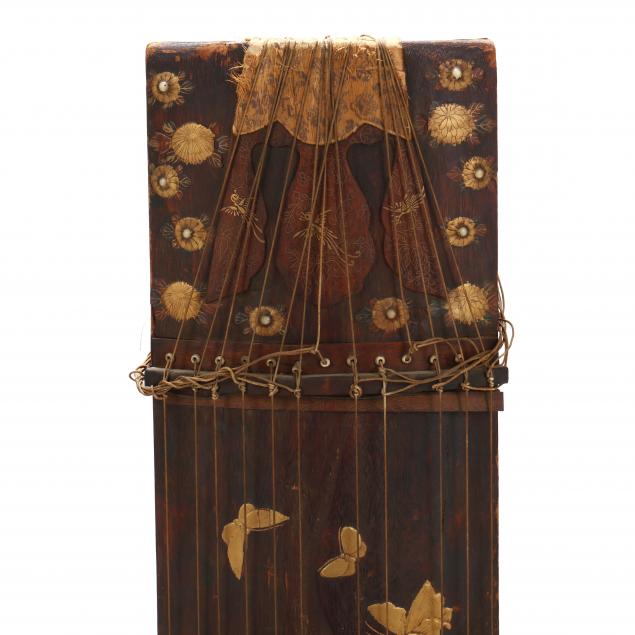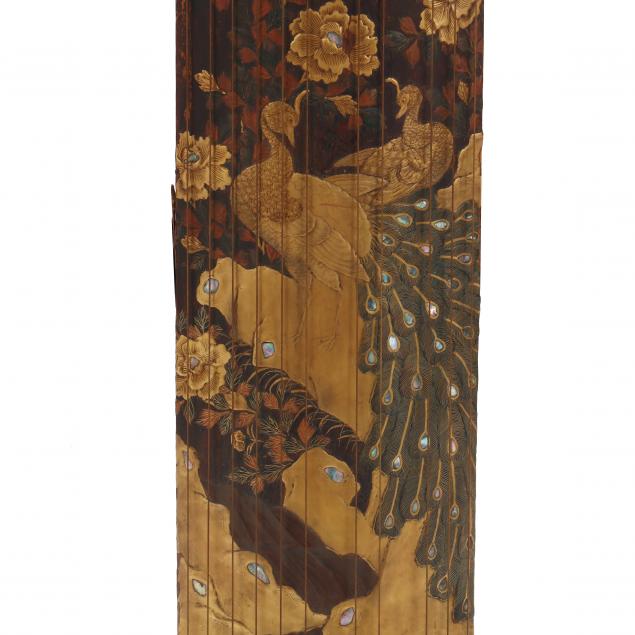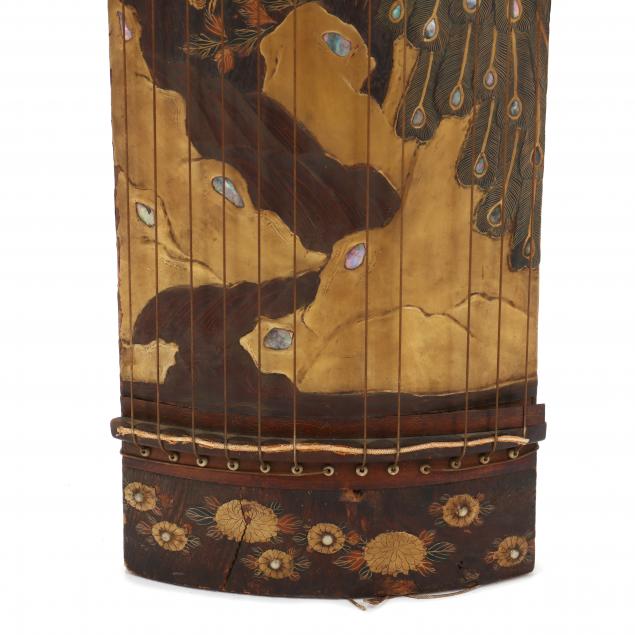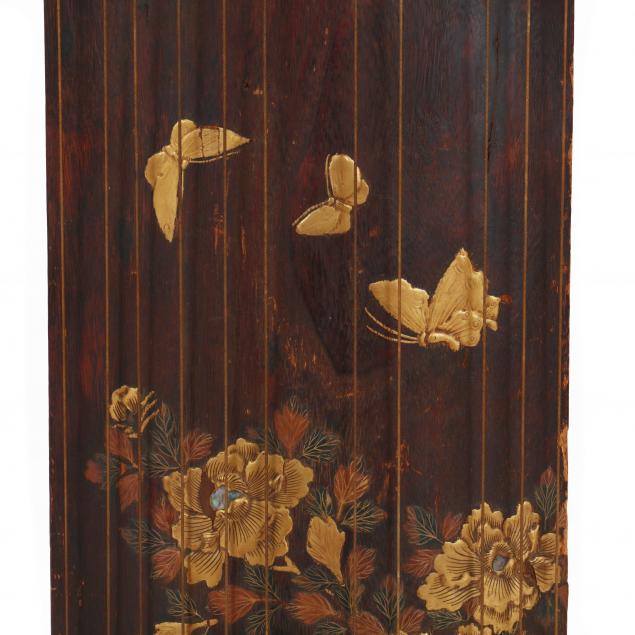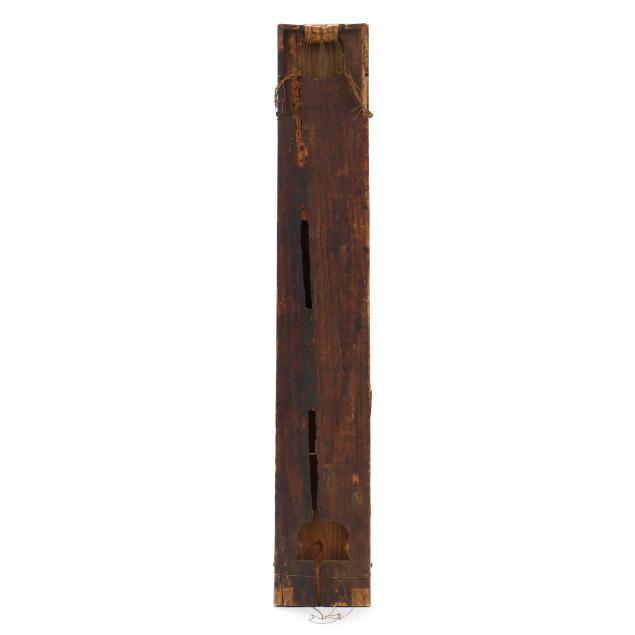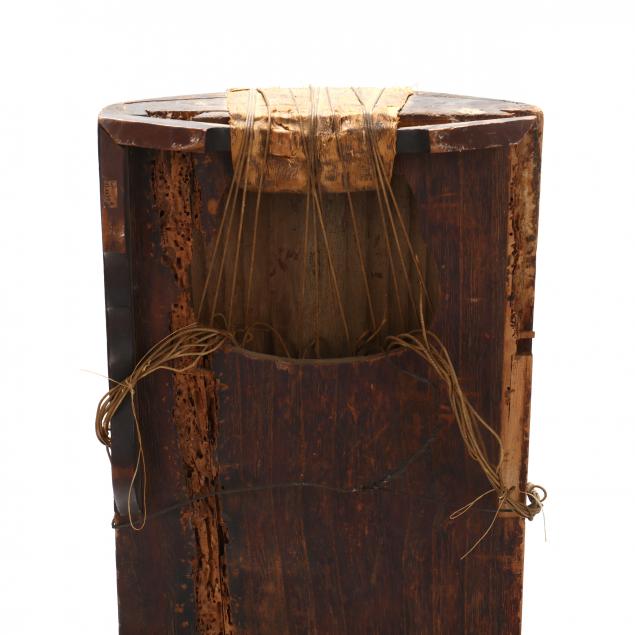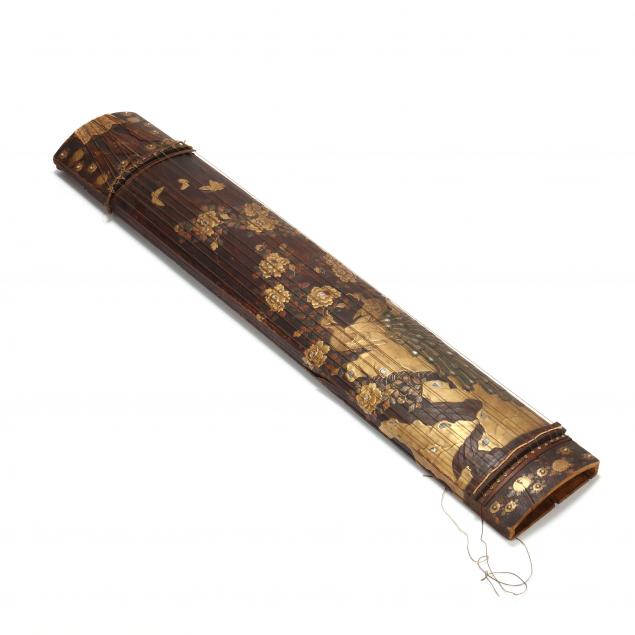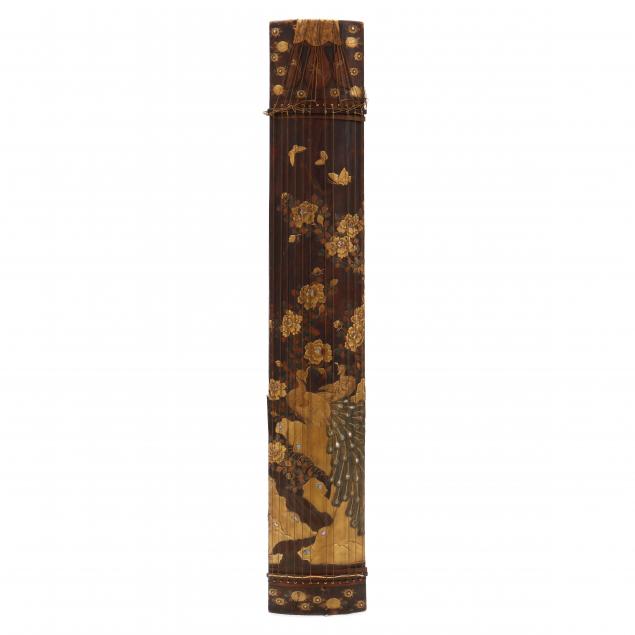
Lot 67
A Rare Japanese Paulownia Wood Lacquered Koto with Peacocks and Peonies
Lot Details & Additional Photographs
3 1/2 x 55 x 9 in.
From the Collection of the late Keith Stanley, Professor Emeritus of Classical Studies at Duke University, North Carolina
Similar to a koto dated c. 1891 from the Wakamura workshop, in the collection of the Metropolitan Museum of Art, accession number 69.271.3.
The Koto is considered the national instrument of Japan. It originated from the Chinese Guzheng but developed its own tradition in Japan since the 8th century. It was traditionally played as a form of entertainment in the imperial courts. Traditionally made of paulownia wood and set with thirteen silk strings played by being plucked with three fingerpicks, tsume, worn on the first three fingers of the right hand. The Koto presented here is meticulously and luxuriously detailed with auspicious decoration of peonies and peacocks which represent worldly power and wealth in Japanese culture. Therefore, this koto may have been created as a ceremonial gift, not meant to be played but rather admired for its beauty and symbolism.
Underside with some losses to wood; insect damage apparent to underside; two feet on one side are lost; one side elevation panel to other end of koto is lost; some wear with losses to edge areas; two strings have broken but remain; no bridges remain with the instrument; lacquer decoration and mother of pearl are intact and stable; overall decoration to front of koto in good condition.
$800 - 1,200
